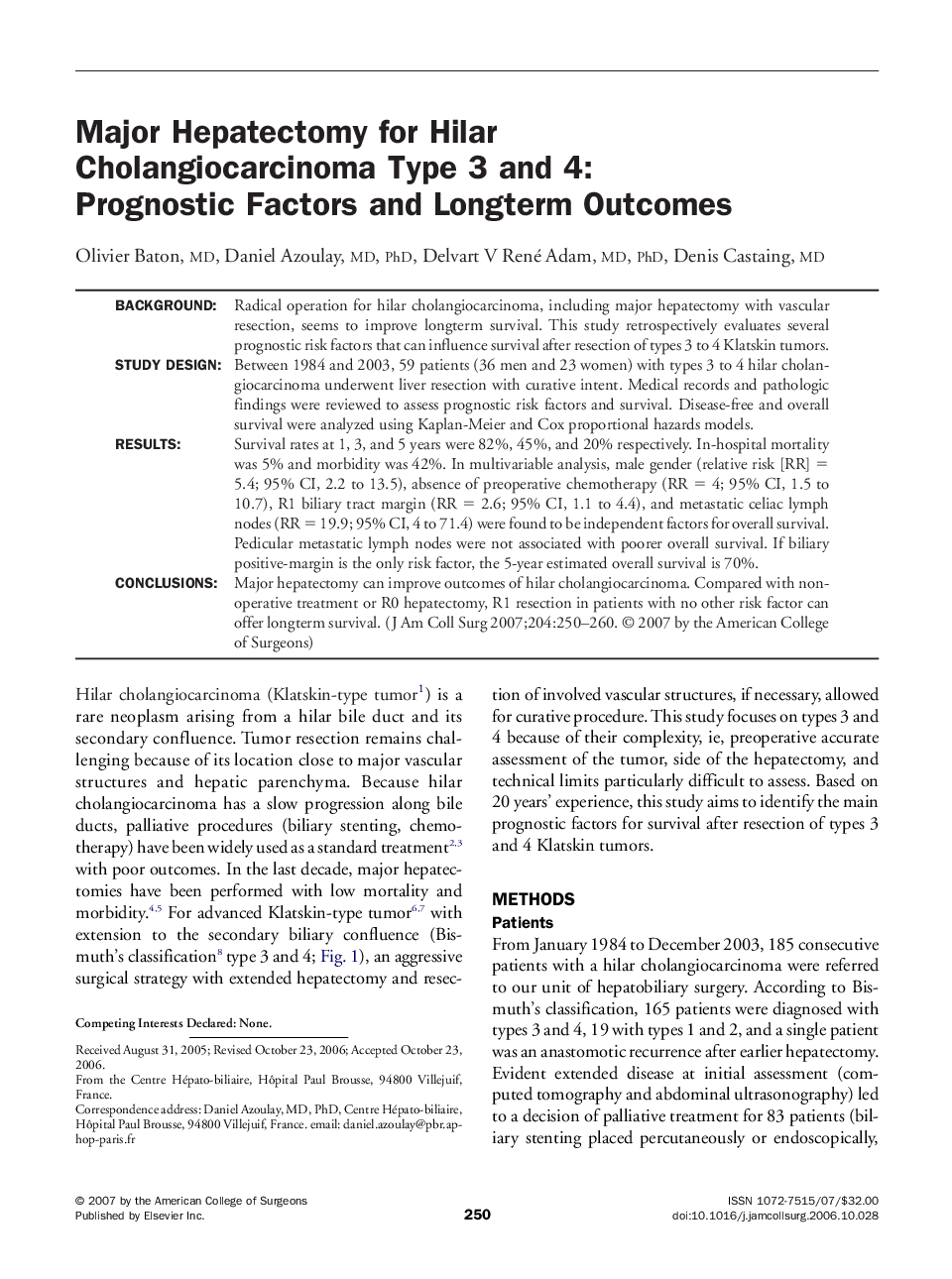| Article ID | Journal | Published Year | Pages | File Type |
|---|---|---|---|---|
| 4295438 | Journal of the American College of Surgeons | 2007 | 11 Pages |
BackgroundRadical operation for hilar cholangiocarcinoma, including major hepatectomy with vascular resection, seems to improve longterm survival. This study retrospectively evaluates several prognostic risk factors that can influence survival after resection of types 3 to 4 Klatskin tumors.Study designBetween 1984 and 2003, 59 patients (36 men and 23 women) with types 3 to 4 hilar cholangiocarcinoma underwent liver resection with curative intent. Medical records and pathologic findings were reviewed to assess prognostic risk factors and survival. Disease-free and overall survival were analyzed using Kaplan-Meier and Cox proportional hazards models.ResultsSurvival rates at 1, 3, and 5 years were 82%, 45%, and 20% respectively. In-hospital mortality was 5% and morbidity was 42%. In multivariable analysis, male gender (relative risk [RR] = 5.4; 95% CI, 2.2 to 13.5), absence of preoperative chemotherapy (RR = 4; 95% CI, 1.5 to 10.7), R1 biliary tract margin (RR = 2.6; 95% CI, 1.1 to 4.4), and metastatic celiac lymph nodes (RR = 19.9; 95% CI, 4 to 71.4) were found to be independent factors for overall survival. Pedicular metastatic lymph nodes were not associated with poorer overall survival. If biliary positive-margin is the only risk factor, the 5-year estimated overall survival is 70%.ConclusionsMajor hepatectomy can improve outcomes of hilar cholangiocarcinoma. Compared with nonoperative treatment or R0 hepatectomy, R1 resection in patients with no other risk factor can offer longterm survival.
